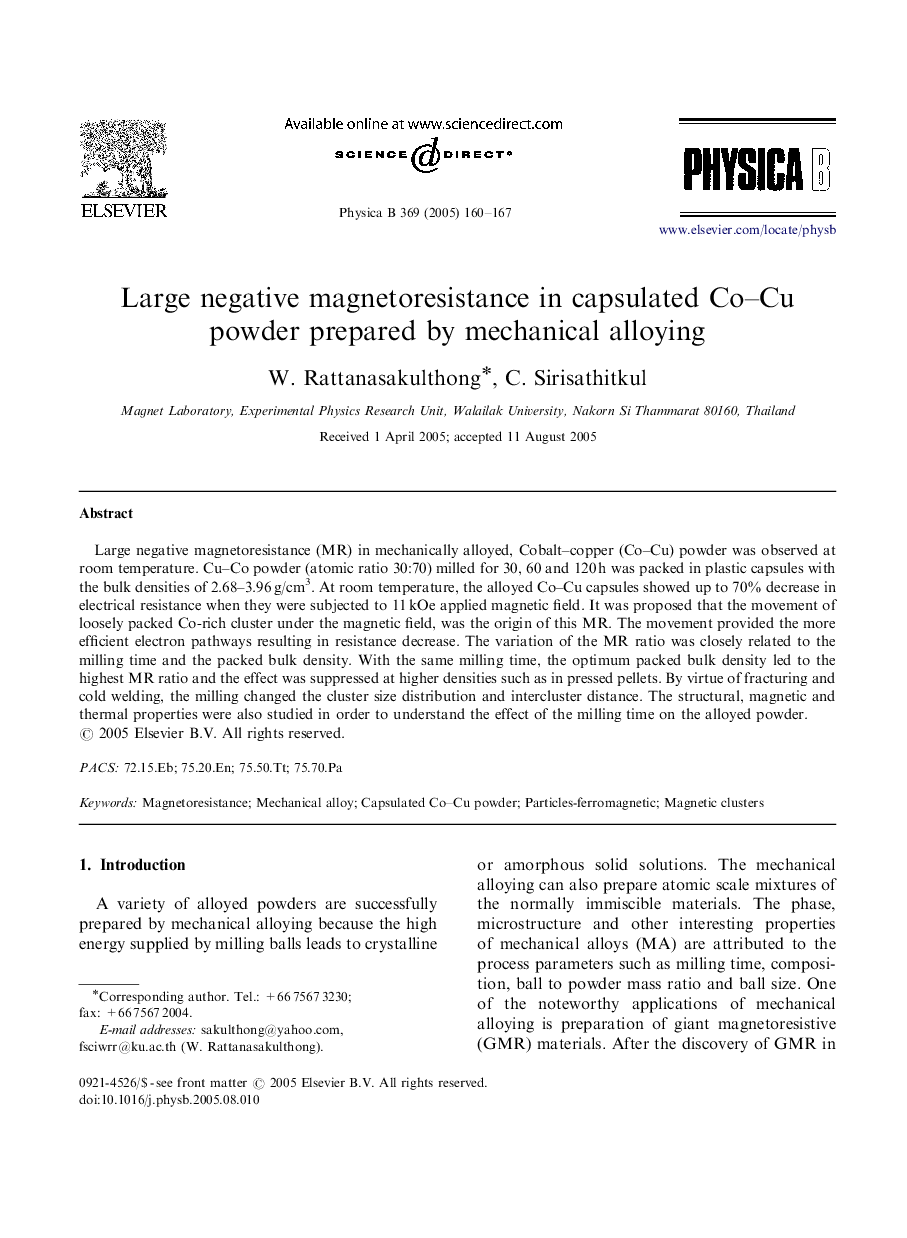| Article ID | Journal | Published Year | Pages | File Type |
|---|---|---|---|---|
| 9837351 | Physica B: Condensed Matter | 2005 | 8 Pages |
Abstract
Large negative magnetoresistance (MR) in mechanically alloyed, Cobalt-copper (Co-Cu) powder was observed at room temperature. Cu-Co powder (atomic ratio 30:70) milled for 30, 60 and 120Â h was packed in plastic capsules with the bulk densities of 2.68-3.96Â g/cm3. At room temperature, the alloyed Co-Cu capsules showed up to 70% decrease in electrical resistance when they were subjected to 11Â kOe applied magnetic field. It was proposed that the movement of loosely packed Co-rich cluster under the magnetic field, was the origin of this MR. The movement provided the more efficient electron pathways resulting in resistance decrease. The variation of the MR ratio was closely related to the milling time and the packed bulk density. With the same milling time, the optimum packed bulk density led to the highest MR ratio and the effect was suppressed at higher densities such as in pressed pellets. By virtue of fracturing and cold welding, the milling changed the cluster size distribution and intercluster distance. The structural, magnetic and thermal properties were also studied in order to understand the effect of the milling time on the alloyed powder.
Related Topics
Physical Sciences and Engineering
Physics and Astronomy
Condensed Matter Physics
Authors
W. Rattanasakulthong, C. Sirisathitkul,
